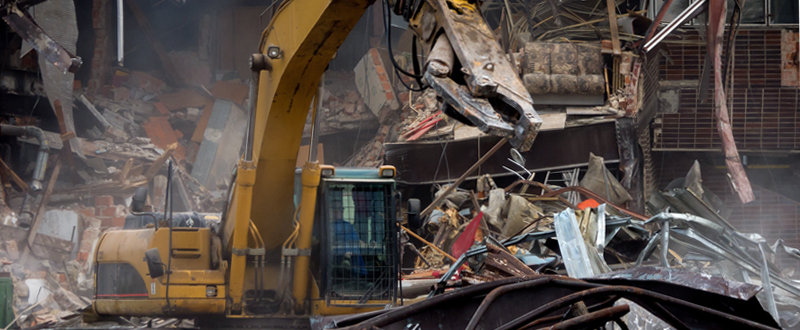Throughout the 20th century, tons of asbestos were mined in our country and put in thousands of everyday products. Asbestos was very inexpensive and was used as filler in many different products throughout many different industries. For example, asbestos was widely used in insulation, drywall, cement, bricks, and tiles.
There are a number of different jobs where workers were exposed to a large amount of asbestos on a very frequent basis. People who have worked in the construction and demolition industries may have an increased risk of developing mesothelioma cancer due to asbestos exposure on the jobsite.
The construction and demolition industry is one of many industries where asbestos products were heavily used. Before it was known to the public that asbestos is a carcinogen that may lead to the development of mesothelioma cancer, asbestos was relied on in many construction products because the mineral was affordable, strong, durable, insulating, and resistant to heat and flame. Due to these properties asbestos was often found in construction products such as pipe insulation, drywall, drywall tape and taping compounds, roofing shingles, ceiling tiles, floor tiles, and cement.
Prior to learning of the hazards of asbestos, construction workers often worked without respirators and other gear to protect them from asbestos exposure. Even those who may not have worked directly with asbestos construction materials may have been exposed to asbestos dust as many tradesmen including electricians, carpenters, plumbers, welders, and painters often worked close together on construction projects. Many job tasks done by these tradesmen on construction sites caused asbestos dust by drilling, sanding, and sawing.
Demolition crews are also among those in the construction industry who may be at higher risk of developing mesothelioma. Asbestos fibers were commonly used in materials such as drywall, drywall tape, and taping compounds. The nature of work done by demolition crews put them at risk of inhaling asbestos dust made airborne by the demolition of asbestos containing materials.
Once asbestos is disturbed, asbestos dust can easily be made airborne where it can be inhaled. These inhaled asbestos fibers can lead to the development of mesothelioma cancer and other asbestos-related diseases.
Unfortunately, millions of people have been exposed to asbestos over the years. Only now are we able to see the disastrous effects of asbestos exposure in the workplace. Generally, it takes 10 to 60 years from the time of asbestos exposure until symptoms appear or mesothelioma is diagnosed.
Many of the companies have established trust funds to pay compensation to persons injured by asbestos.
If you have mesothelioma, or another asbestos-related injury, and wish to consult an attorney about your legal rights to compensation, CLICK HERE for a free consultation.





